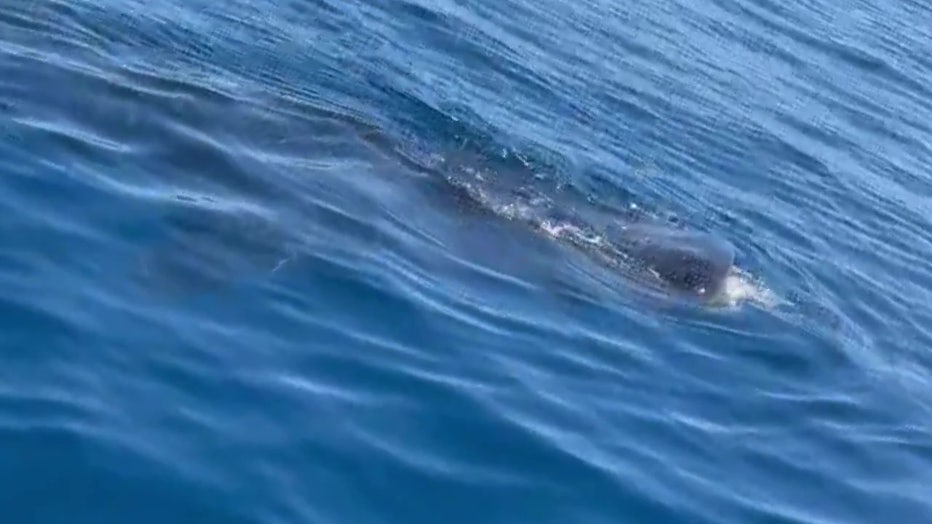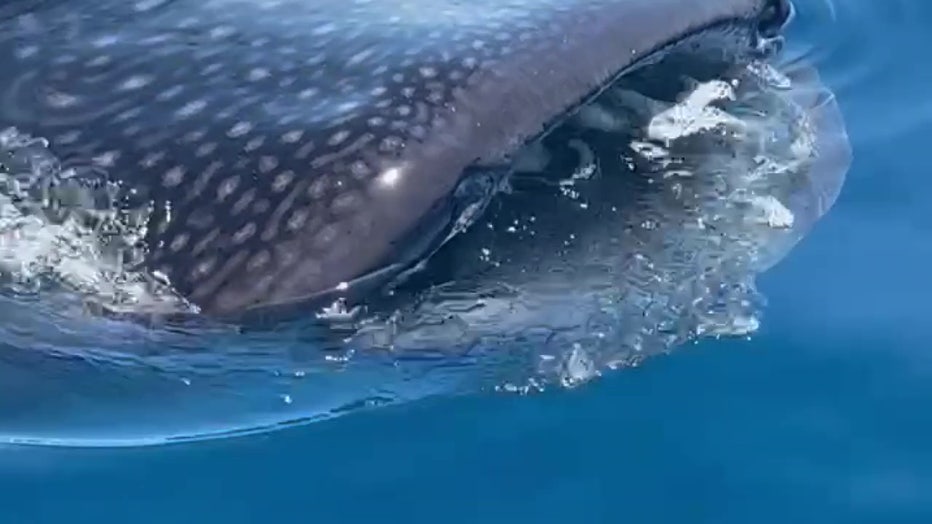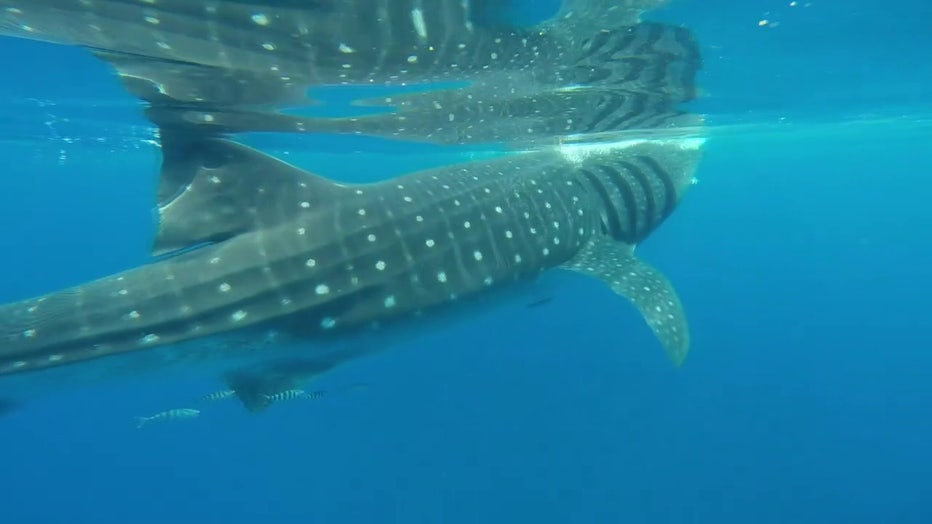Whale shark sighting off Sarasota coast not completely unusual, experts say

Whale shark spotted off Sarasota coast
A pair of boaters spotted a whale shark off the coast of Sarasota over the weekend.
SARASOTA, Fla. - Two Tampa Bay boaters spotted a whale shark on Sunday while fishing about 26 miles off the coast of Sarasota.
Brad Ward said he and Mike Michieli noticed a stream of plankton when suddenly a giant mouth rose from the deep. For about 45 minutes Ward said the massive shark swam next to his boat, chowing down on plankton.
It's a rare, but not completely unusual sighting in the Florida gulf.
"We seem to be finding whale sharks more frequently, or at least we’re getting those encounters recorded more frequently because everybody’s got an iPhone or a GoPro and great ways to record," said Florida Aquarium associate curator and shark guide Eric Hovland.
Hovland, an avid diver, spends a significant amount of time in the gulf. As he can attest, Ward's sighting is not only special, it's fairly extraordinary.
RELATED: Fisherman spots whale shark feeding on plankton off coast of Sarasota
"I’m looking for an opportunity to see them myself still, it’s been since 1990 when I saw one off the coast of Texas," said Hovland.

Each year, hundreds of whale sharks migrate to the Gulf of Mexico to feast.
"During these summer and early fall months the plankton just bloom here and the whale sharks can get a very good meal without having to try too hard," explained ZooTampa associate veterinarian Dr. Kendra Baker. "So you do see all of them converging on a single spot. And what you see them doing is just eating, really stocking up."
Whale sharks appear to prefer tropical habitats but migrate extremely long distances for unknown reasons.
"There’s just a lot of mystery to that migration, but we do know that they can travel great distances, crossing oceans to get to food, potentially to their reproductive grounds, and whatever else whale sharks do in their free time," said Hovland.

Much has yet to be learned about the world's largest fish. Scientists still don't know where or how they mate, where they give birth, where the pups grow up or even where adults go for half the year.
"Typically we do see more males that are feeding in the Gulf of Mexico. It's quite an interesting distinction," said Baker.
It's estimated that 70% of the whale sharks that migrate to the Gulf of Mexico are male. Scientists still haven't figured out where all the females go.
Despite the confusing name, whale sharks are sharks, not whales. But like many whales, whale sharks are filter feeders and give birth to live young. It's believed that fertilized eggs hatch inside whale shark mothers, which then give birth to around 300 live pups.

Whale sharks can grow up to 50 feet in length and weigh up to 25,000 pounds. Their creamy white spots form a unique pattern on each shark, which researchers can use to identify and track individual animals.
Though they are extremely slow swimmers, scientists have observed the sharks diving to depths of more than 4,000 feet.
Your best chances of seeing a whale shark in the Gulf of Mexico are from late May to September around the Yukatan peninsula of Mexico and near the Mississippi River mouth.
"If you want more guarantees, and you’re up for some travel, there are international travel opportunities to see them in the Philippines, Madagascar, and there are some hotspots around Honduras at certain times of the year," said Hovland.
The endangered species is not predatory and is not a threat to humans. As with all large marine life, however, scientists caution boaters to look out for whale sharks and keep a safe distance with boats.
"We can be a danger to whale sharks so approach with caution. They can’t turn or stop very quickly so be very cautious with our boats around them," said Hovland.

